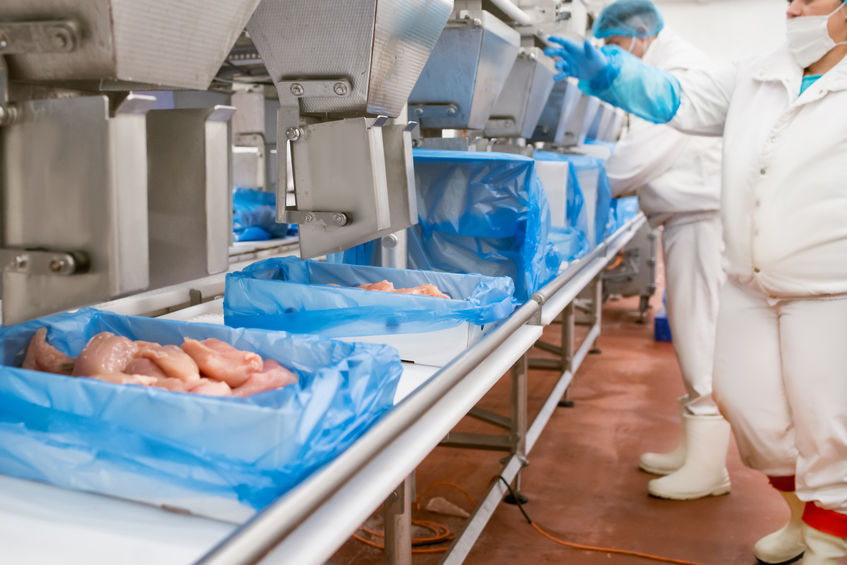Is Manufacturing Automation or Manual Labor More Cost Effective?
The manufacturing sector is embracing the trend toward automation to boost efficiency, throughput and quality while helping offset a manufacturing labor shortage that has been increasing since the Covid pandemic. While the benefits of manufacturing automation are plentiful, it is not an inexpensive alternative to skilled manual labor as there are upfront investment costs, as well as the cost of programming, operating and maintaining automated equipment.
So, how do you know when manufacturing automation or manual labor is the most cost-effective solution? This blog will examine the cost factors of each approach to help you determine when it’s worth investing in automation and when manufacturing labor costs are the less expensive alternative.
Why Manufacturing Automation is on the Rise

Data from the Association for Advancing Automation shows that there were record-breaking sales of automated equipment in recent years, with some statistics showing that manufacturers purchased more than 29,000 robots in 2021.
There are two drivers behind the increasing use of robots and other automation machinery manufacturing processes: The demand to boost efficiency, throughput, quality and profits; and the ongoing manufacturing labor shortage.
As a matter of fact, Deloitte’s report, The 2023 Manufacturing Industry Outlook, states: “Despite a record level of new hires, job openings in the manufacturing industry are still hovering near all-time highs. Additionally, voluntary separations continue to outnumber layoffs and discharges, indicating substantial workforce churn. This prevailing workforce shortage, elevated by supply chain limitations, is reducing operational efficiency and margins.”
And because robots and automated equipment are faster and more precise ways to get the job done and automation does not become fatigued, require breaks or make mistakes like human workers, automated technologies are usually a surefire way to increase operational efficiency and achieve higher levels of throughput and quality, which ultimately leads to greater profits for most manufacturing operations.
However, manufacturers must remember that automation ROI is not guaranteed for every process or task, so it’s important to determine when investing in manufacturing automation makes sense and when skilled manual labor is more cost effective. The best way to do that is to calculate the cost of the automation project, as well as the anticipated automation ROI, and compare that to the manufacturing labor costs to determine which is more cost effective for the operation.
How to Calculate the Cost of Manufacturing Automation
Before investing in manufacturing automation, it’s important to determine the actual cost of the project and its anticipated ROI. To do so, you must calculate the overall cost of the project and anticipated operational expenses, then subtract the expected savings and financial gains.
To obtain the cost of the manufacturing automation project calculate the following:
- The base cost of the equipment: Obtain quotes from a supplier for the price of the equipment that will be needed to complete the project.
- The cost of additional components and accessories: Additional components for the manufacturing automation project may include conveyors or other ancillary equipment, as well as machine guards, fencing and safety equipment. Accessories may include end-of-arm tooling, sensors, vision systems, cable management systems and other pieces of equipment that may or may not be included in the base cost of the equipment.
- Software and controllers: Software, controllers and other automation control equipment should be factored into the cost, so it’s a good idea to determine the cost of necessary control systems.
- Design, integration, programming and training: Also consider the cost of designing and integrating the automated equipment into existing infrastructure. Programming may be an additional expense and training for operators and maintenance technicians should be factored into the cost, as well.
- Operational costs: Also, consider the cost of operating and maintaining the automation, which will require additional skill sets from employees.
After determining the base cost of the manufacturing automation project, as well as ongoing operational and maintenance expenses, the anticipated outcome, such as gains in revenue from increased throughput, higher-quality manufacturing and reductions in rework activities and materials, savings from manufacturing labor costs and waste reduction, as well as uptime and downtime ratios should be calculated. Once this figure is established, it can be subtracted from the overall cost of the manufacturing automation project to determine the automation ROI for the project.
How to Calculate Labor Cost in Manufacturing
To calculate the cost of manual labor for the same process, there are some tangible and intangible costs to consider.
When determining the manufacturing labor costs, factor the following expenses:
- The cost of manual labor, including current wages, wage inflation and non-wage benefits
- Worker’s Compensation insurance costs
- Payroll taxes
- Personal protective equipment
If possible, include estimates for non-tangible manufacturing labor costs, such as:
- Product loss due to human error
- Expenses related to sick time caused by on-the-job injuries
- Turnover rates and associated training costs
- Production loss due to bottlenecks caused by inefficiencies in manual labor
Is Manufacturing Automation or Manual Labor More Cost Effective?
Once the costs for automation and manual labor are calculated, they can be compared to determine which option is the most cost effective for that operation.
As a general rule of thumb, manufacturing automation usually comes out on top for high-volume, critical and hazardous processes, as well as those that experience a lot of downtime due to the inability of employees to keep pace or lines that see a lot of quality issues and scrap related to human error.
Conversely, manual labor may make more financial sense for low-quantity runs, one-off projects, processes that require complex, problem-solving skills or small tasks that can easily be managed by lower-skilled workers.
To determine the cost of a manufacturing automation project, please contact JHFOSTER, at Tavoron Company. Experts there can assist with determining the base cost of the project and help evaluate whether manufacturing automation will be more cost effective than manual labor to ensure that manufacturers get the most from an automation investment.
